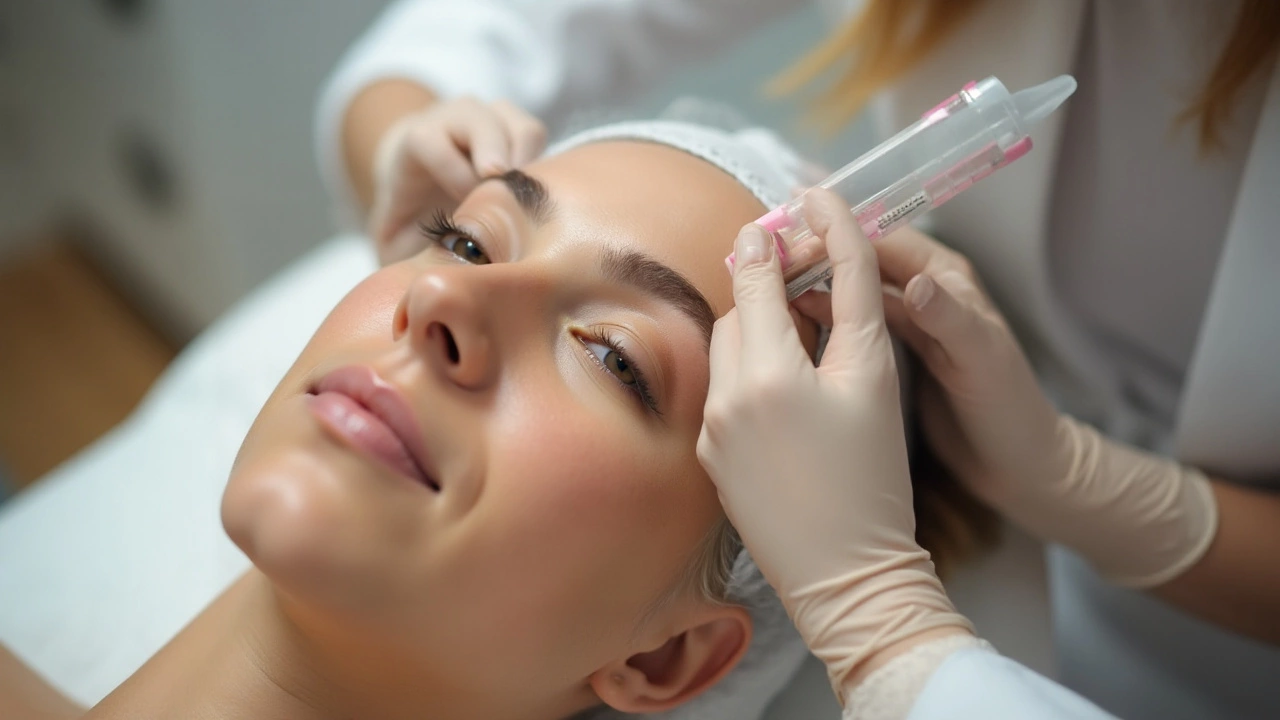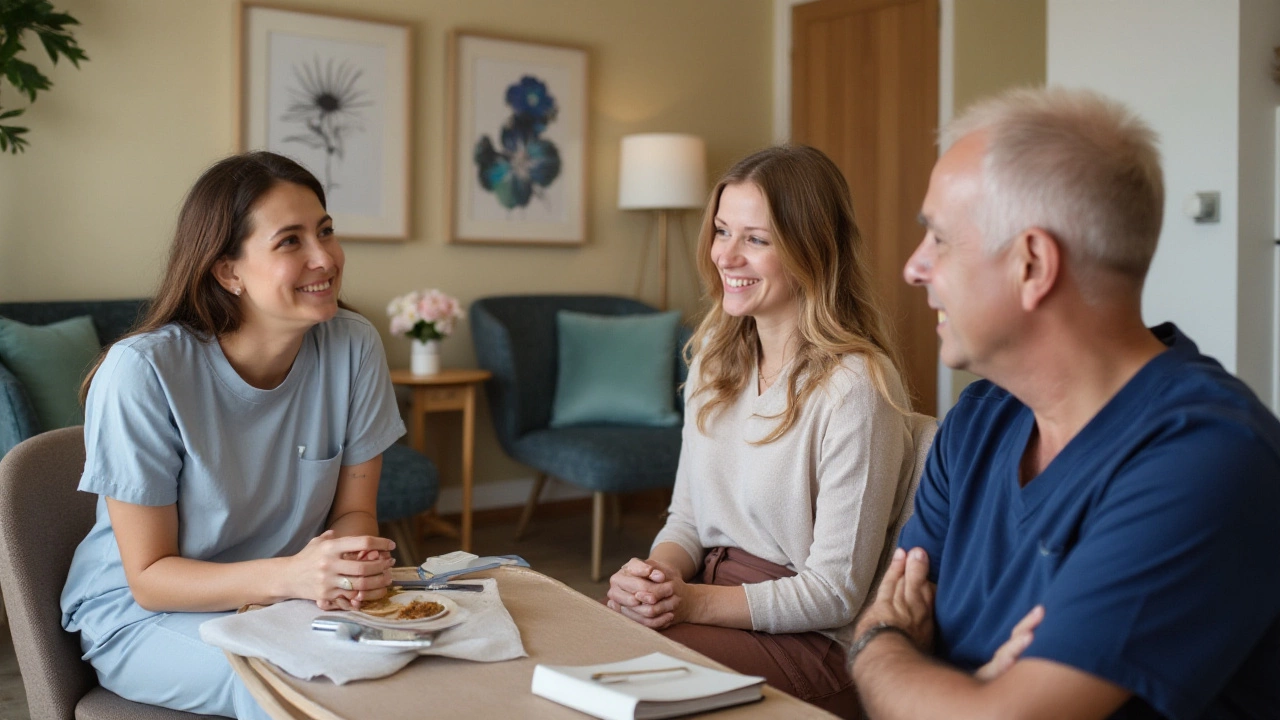Cosmetic surgery is an ever-evolving field that offers numerous opportunities for enhancing one's natural beauty. With advancements in medical technology, many individuals in the UK are seeking options to refine their appearance safely and effectively. However, understanding the safety levels of various procedures is crucial.
In this article, we will delve into the world of cosmetic enhancements, highlighting which ones are considered the safest. From non-invasive treatments that promise minimal downtime to more involved surgeries with proven safety records, the choices are vast yet must be made with care.
For anyone considering a cosmetic change, knowing the details about each procedure's safety, recovery time, and effectiveness can make all the difference. Join us as we explore the safest options available, ensuring that your journey to feeling more confident in your skin is both informed and safe.
- Understanding Cosmetic Surgery Safety
- Non-Invasive Procedures
- Minimally Invasive Techniques
- Traditional Cosmetic Surgeries
- Choosing the Right Surgeon
- Recovery and Aftercare Tips
Understanding Cosmetic Surgery Safety
Embarking on a journey to enhance one's appearance through cosmetic surgery is a personal decision that requires careful thought and comprehensive understanding. At the heart of this decision is the assurance of safety, which is paramount for anyone considering such procedures in the UK. With an array of cosmetic surgery options available, understanding the factors that contribute to safety is essential. These range from the qualifications and experience of the surgeon to the technological advancements in surgical equipment.
In assessing the safest procedures, it is crucial to evaluate the underlying risks involved in both non-invasive and invasive surgeries. Each procedure brings its own set of potential risks and complications, which should be communicated transparently by your healthcare provider. A comprehensive pre-surgery consultation allows the surgeon to assess a patient’s medical history, allergies, and specific risk factors, tailoring the surgical plan to optimize safety.
Moreover, regulatory standards play a significant role in maintaining safety across facilities. The UK boasts stringent regulations governed by organizations such as the Care Quality Commission (CQC), ensuring that clinics adhere to high standards of care and hygiene. It's recommended to verify if the clinic or hospital is registered and regularly inspected by these regulatory bodies for compliance.
The British College of Aesthetic Medicine emphasizes, "Choosing a certified and experienced practitioner is vital in ensuring safety and achieving the desired outcome."
Ensuring the practitioner’s qualifications is another critical step. Look for certifications from recognized bodies, such as the General Medical Council (GMC), which attest to a surgeon's competence and specialization in cosmetic procedures. It is also beneficial to review prior patient testimonials and before-and-after portfolios, offering insights into the surgeon's expertise and previous outcomes.
Understanding advances in surgical techniques and anesthesia also plays a role in safety. Technologies such as laser-assisted procedures or TIVA (Total Intravenous Anesthesia) have minimized risks and enhanced recovery. Always inquire about the techniques used in your intended procedure to gauge their reputation for safety and efficacy. Ultimately, safety in UK cosmetic surgeries is attainable through informed choices and diligent research.
Non-Invasive Procedures
Non-invasive procedures have revolutionized the world of cosmetic surgery, giving individuals the possibility to achieve visible enhancements without the hassle of surgery. These procedures do not require incisions into the body or the removal of tissue. Because of their minimal downtime and lower risk profiles, they have gained significant popularity in the UK and beyond. Common non-invasive treatments include Botox injections, dermal fillers, and laser skin therapies. Such methods can effectively smooth wrinkles, enhance facial contours, and rejuvenate skin, all while allowing the patient to go about their day with little interruption. The growing demand for these procedures reflects a societal shift towards convenient, yet impactful beauty solutions.
Botox and dermal fillers are perhaps two of the most sought-after non-invasive options. Botox, made from the botulinum toxin, is injected into muscles to temporarily paralyze them, which helps in diminishing the appearance of fine lines and wrinkles. According to recent research, over six million Botox treatments are administered globally each year, a testament to its trusted results. UK cosmetic clinics report that the most common areas treated are the forehead, crow's feet, and frown lines. On the other hand, dermal fillers are used to plump up areas of the face that have lost volume, such as the cheeks and lips. Hyaluronic acid-based fillers are especially favored due to their natural-looking results. One notable advantage of fillers is their reversibility; if a patient is unsatisfied with the outcome, solutions like hyaluronidase can dissolve the filler, a unique benefit within the realm of cosmetic interventions.
Laser treatments, another significant branch of non-invasive procedures, target skin issues ranging from pigmentation and scars to fine lines and rosacea. They work by using focused light beams to remove or alter layers of skin. One popular treatment is the Fractional CO2 laser, renowned for promoting collagen production and providing a smoother skin texture. Many patients report a more radiant appearance post-treatment, with some seeing results in just a few sessions. It's fascinating how these technologies are not only improving aesthetics but are also helping medical conditions like acne scars in a gentle manner. A study from the British Journal of Dermatology highlights that non-invasive laser therapies have seen a 30% increase in demand year over year, showcasing their growing acceptance and effectiveness.
While non-invasive procedures are often considered safer than surgical options, this doesn’t mean they are completely risk-free. Patients need to be aware of potential side effects such as redness, swelling, bruising, or even rare allergic reactions. One essential tip is to always seek treatment from certified professionals who possess in-depth knowledge and experience. Whether it’s a nurse practitioner or a dermatologist, the right practitioner can greatly reduce risks and ensure optimum results. Long-term satisfaction with cosmetic work often boils down to well-informed choices and realistic expectations, especially when opting for safest procedures.
By being less intrusive and generally more affordable, non-invasive procedures open the doorway for many who may have been hesitating to pursue cosmetic enhancements. As technology and techniques advance, options will only continue to grow, rendering these procedures an integral part of the beauty and healthcare industries in the UK. Respectable beauty experts argue that, with advancements on the horizon, the efficacy and safety of such treatments are set to enhance even further. Indeed, the marriage of technology and aesthetics holds a promising future for countless individuals eager to look and feel their best.

Minimally Invasive Techniques
In recent years, the desire for enhancing beauty with minimal disruption has led to a surge in popularity for minimally invasive techniques. These procedures have become a favorite in the UK due to their ability to deliver significant results without the lengthy recovery times associated with traditional surgeries. One popular option is the use of dermal fillers, which are injected beneath the skin to smooth wrinkles, plump lips, or restore youthful volume. This procedure allows individuals to return to their routines almost immediately, albeit with some temporary bruising or swelling.
Another sought-after technique is the use of Botox, a household name in the realm of cosmetic surgery. Botox works by temporarily paralyzing muscles to soften facial lines and wrinkles, providing a refreshed appearance in mere days. According to Dr. Jane Rowley, a prominent cosmetic surgeon, "Botox has transformed how we approach anti-aging treatments. It's safe, effective, and the results are consistently reliable, making it a cornerstone in minimally invasive cosmetic solutions." The growing demand for these treatments highlights a trend towards seeking subtle enhancements, preserving more natural characteristics while addressing specific concerns.
Laser skin resurfacing is also part of this category, favored for its ability to alter the skin's surface with precision. Through concentrated laser beams, damaged skin cells are removed, promoting new growth that is smoother and more even-toned. This technique is an excellent option for those looking to treat sun damage, scars, or irregular pigmentation. Although slight soreness may occur post-procedure, most clients find the results well worth the minor discomfort. For individuals wary of surgery, minimally invasive techniques offer the convenience of less drastic changes while still achieving impressive improvements.
Another exciting development is the utilization of radiofrequency and ultrasound technologies, which target the deeper layers of skin to stimulate collagen production and tighten sagging areas. These methods provide a sculpting effect without incisions or scars, ideal for those focusing on the jawline, neck, or other body areas. While multiple sessions might be necessary to see the desired results, patients appreciate the non-surgical nature and quick session durations. Procedures like these reinforce the appeal of minimally invasive options, where safety and visible benefits go hand in hand.
The allure of safe cosmetic enhancements cannot be understated. A study conducted by the British Association of Aesthetic Plastic Surgeons (BAAPS) reveals that demand for minimally invasive treatments in the UK has increased by 15% annually over the last decade. This statistic underscores how patients value subtle, effective changes achieved through these pioneering approaches. The continued innovation in this field suggests that the future of cosmetic surgery will likely see even more developments that prioritize patient convenience, safety, and satisfaction.
Traditional Cosmetic Surgeries
Traditional cosmetic surgeries have long been the gold standard for achieving substantial changes in the body's appearance. These procedures, which bring transformative results, often come with risks and require careful consideration. In the UK, popular surgeries include rhinoplasty, liposuction, and breast augmentation. These options are often chosen for their effectiveness and ability to address concerns that non-invasive methods cannot. Yet, understanding the safety measures and choosing the right medical professionals are vital steps toward a successful experience.
Rhinoplasty, commonly known as a nose job, is one of the most requested cosmetic surgeries worldwide. It allows patients to reshape their noses, either for aesthetic reasons or to correct breathing issues. When performed by an experienced surgeon, rhinoplasty can dramatically enhance facial harmony. Patients often find increased confidence post-surgery. Liposuction, another staple in the realm of body contouring, is heralded for its ability to remove excess fat deposits, offering a more sculpted body shape. While effective, potential candidates must understand the recovery process, which involves wearing compression garments and manageable discomfort for several weeks.
Breast augmentation stands as a landmark procedure for numerous individuals seeking enhanced body proportions and self-esteem. The process involves the insertion of implants to increase breast size or restore volume after weight loss or pregnancy. Selecting the right size and type of implant contributes to a natural look and feel. Notably, this surgery requires a recovery period monitored by healthcare professionals to prevent complications such as infection or implant displacement. It's pivotal that patients communicate openly with their surgeons about their expectations and concerns, ensuring customized care plans for optimal results.
"The successful outcome of traditional cosmetic surgeries lies not just in the skill of the surgeon, but in the patient's understanding and realistic expectations," says Dr. James Collins, a seasoned cosmetic surgeon in London.
When considering traditional cosmetic surgeries, the qualifications of the surgeon cannot be overstated. Look for board certification and extensive experience in the specific procedure you're interested in. Collecting testimonials and before-and-after photos from past patients can offer insights into the surgeon's capabilities and the potential outcomes you can expect. In the UK, patients also have access to strict regulations ensuring that clinics and hospitals uphold safety standards imperative for patient safety. This provides an added layer of assurance as you embark on this transformation journey.
The decision to undergo surgery isn't simply about aesthetics; it involves a deep transformation journey. Staying informed is crucial, from the initial consultation stages to post-operative care. The promise of tradition holds weight in cosmetic surgery, bridging the gap between medical innovation and a patient's desire for change. With meticulous preparation and expert guidance, traditional surgeries can be a safe way to achieve long-term satisfaction and improved self-perception. Despite the complexity of these procedures, they remain a testament to medical achievements in creating opportunities for enhanced well-being and confidence.

Choosing the Right Surgeon
Choosing the right cosmetic surgeon is perhaps the most critical decision you will make on your journey to aesthetic improvement. In the UK, where cosmetic procedures are growing in popularity, selecting a qualified and highly experienced professional can make all the difference. Start by ensuring that your potential surgeon is registered with the General Medical Council (GMC) and is a member of reputable professional bodies such as the British Association of Aesthetic Plastic Surgeons (BAAPS) or the British Association of Plastic, Reconstructive and Aesthetic Surgeons (BAPRAS). Such memberships indicate a high level of expertise and a commitment to continuing education and ethical practice.
A common approach to finding the best surgeon is through a combination of research, recommendations, and consultations. Look for reviews and testimonials from previous patients, but approach them as part of a broader decision-making process, knowing that each individual's experience is unique. An initial consultation is an invaluable opportunity to gauge your comfort level with the surgeon. Pay attention to how well the surgeon listens to your concerns and explains procedures, risks, and expected outcomes. This rapport is crucial for trust, which is foundational to satisfactory cosmetic surgery results.
It's helpful to ask surgeons about their specific experience in the procedure you are considering. Some may have a comprehensive portfolio they can share, showcasing their work with before-and-after images. Evaluate their past work critically, focusing on consistency and realistic results. Remember, aesthetic preference is subjective, so ensure their aesthetic aligns with your personal vision. In some cases, surgeons may use digital simulations to illustrate potential outcomes. This can be a powerful tool for setting realistic expectations. As Dr. Adam Searle, a former president of BAAPS, once said,
"Surgery is an art and a science; the best outcomes come from understanding both."
Given that safety extends beyond the procedure itself, assess the facility where the surgery will take place. Ensure that it is accredited and equipped for emergencies. Understanding the post-operative care policy is equally essential, as good aftercare can significantly impact your recovery and final results. Ask about the support team, their qualifications, and their experience. Remember, having a well-trained team behind your surgeon increases your safety and the likelihood of successful results. Ultimately, trust your instincts when choosing a professional to enhance your body and face. If something doesn't feel right during your decision-making process, seek other opinions until you find the right match.
Recovery and Aftercare Tips
Embarking on a journey to enhance your appearance with the help of cosmetic surgery is a thrilling yet careful decision. One cannot underestimate the power of a proper recovery plan, which plays a pivotal role in ensuring success and the sustainability of the results. This segment focuses on equipping you with valuable insights and practical advice for a smooth convalescence period.
First and foremost, patience is crucial during recovery. Whether you've opted for a non-invasive procedure or more intricate traditional cosmetic surgery, the body requires time to heal. Adhering strictly to the guidance and instructions given by your surgeon can significantly minimize the risk of complications, enhance healing, and improve the end results. Rest calmly, because any exertion, especially during the initial weeks, can hamper your body's healing capabilities. Take this time as an opportunity to pamper yourself, invest in some enjoyable light reading, and plan activities that do not demand physically taxing efforts.
Nutrition also plays a fundamental role in the process. A balanced diet rich in vitamins and minerals aids your body's natural recovery processes. Eating foods high in Vitamin C and Zinc can help reduce inflammation while promoting tissue regeneration, making them excellent additions to your recovery diet. Staying hydrated is equally crucial. Drinking plenty of water supports the elimination of toxins and keeps your skin hydrated and resilient.
"Recovery is an integral part of the cosmetic surgery journey. Following your post-operative instructions meticulously will lead to a smooth recovery and the best possible outcomes," advised Dr. Jane Walsh, a renowned cosmetic surgeon in London.
Similarly, choosing clothing wisely is an often-overlooked aspect yet essential part of aftercare. Opt for loose, comfortable garments that don't chafe or apply pressure to the treated areas. Many patients opt for specially designed compression garments, as these can significantly aid in minimizing swelling and supporting the healing of tissues after certain procedures.
It's equally important to schedule and attend follow-up appointments diligently. Regular check-ins are not only for examining how the procedure results are settling but also serve as a valuable time for you to voice any concerns or ask questions. These visits give your surgeon a chance to intercept any potential issues in the early stages, thereby ensuring your recovery stays on track.
Lastly, mental well-being should not be ignored. The transition period after surgery can be emotionally challenging, as changes to one's appearance can temporarily lead to mixed feelings. Engaging in activities that light up your spirit, maintaining social connections, or even speaking with a counselor can provide much-needed support during this transformative time. Remember, this phase is just a stepping stone toward the beautiful transformation you've set out to achieve.




